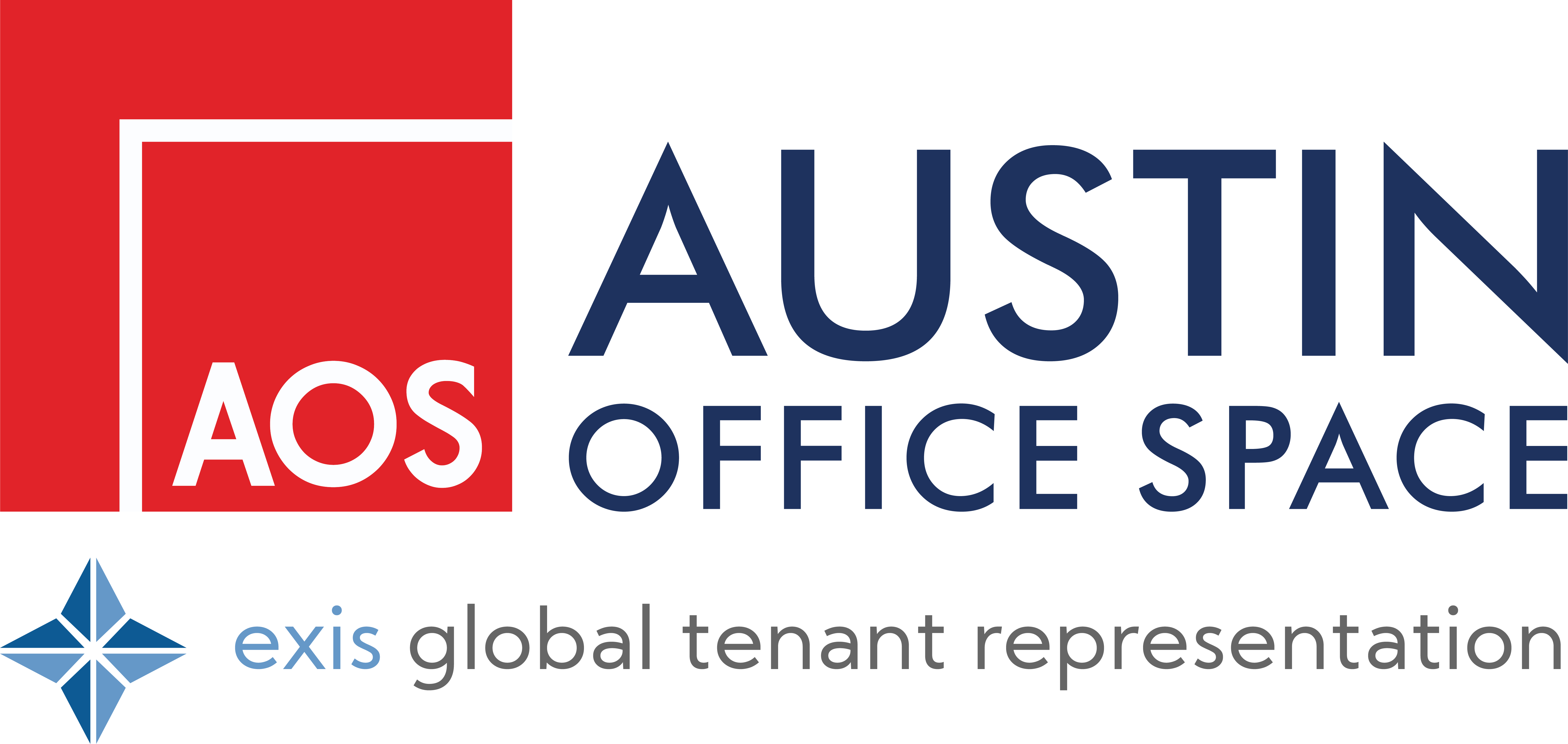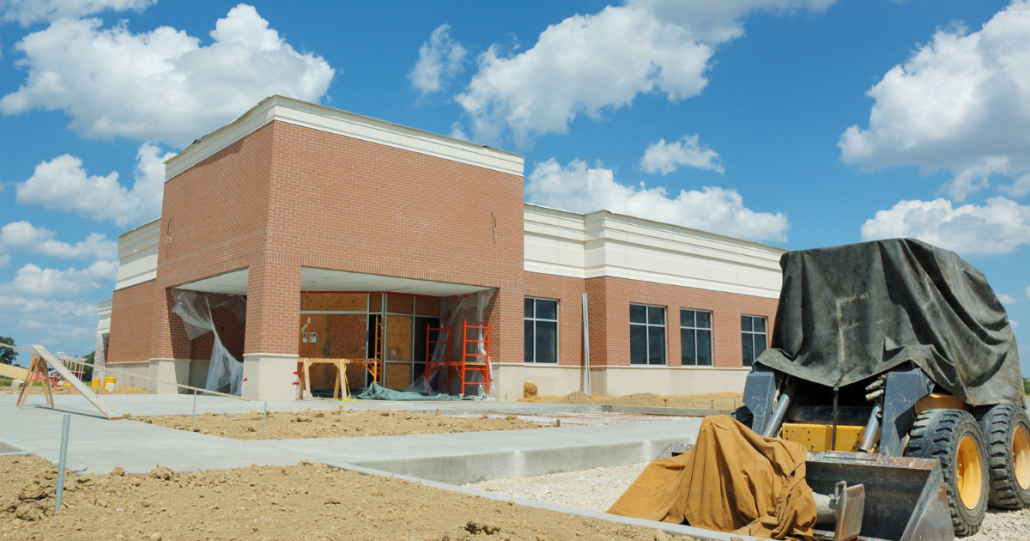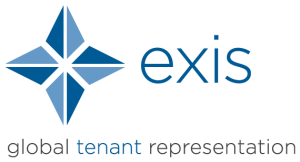“Survive until 25!”
/in News /by officespaceThis is the new unofficial mantra of the real estate industry.
Here’s why:
1. Interest Rates
The Federal Reserve has effectively put the breaks on our inflation (and economy) and may have just pulled off the “soft landing” with the stock market looking reasonably healthy. But higher interest rates impact affordability and many buyers are sitting on the sidelines until the current rates become “normal” or they see a rate or price improvement that gives them a reason to act. Either way, I see the majority of tenants/buyers waiting until 2025 to get in the game and start making long-term decisions like signing a 7-year lease or buying office buildings.
2. Navigating Economic Uncertainty
The softening economy, job market, and potential recession have business leaders and employees being cautious about big real estate decisions.
3. Looking Ahead to the 2024 Presidential Election
The presidential contest has a unique knack for stirring up conflict and uncertainty that permeates our society. The potential policy shifts that a new administration could bring hold the power to substantially impact businesses. Consequently, many organizations find themselves in a temporary holding pattern, observing the election’s outcome before charting their course of action. Once a decision is reached at the polls, the economy and bigger real estate decisions are set back into motion.
4. Expectations
Buyer and seller do not see values the same way right now. Sellers/Landlords still have recent memories of their record-high property valuations and are not ready to let that dream die so soon. Properties listed at prices based on Cap rates of 5% don’t make any sense when money costs 7.5% to borrow. Buyers/Tenants are looking for a price that factors in the higher borrowing costs and vacancy in the market. This gap in expectations means fewer transactions getting done.
5. Slow Return to Work
Covid sent everyone home with a laptop and the way we use office space has shifted forever. The return to the office with hybrid schedules has been sluggish at best. The return to the office is going to need to be led by the big companies establishing the new work normal. I believe office occupancy will improve over time but will never quite be the same. (Those leasing office space will find sublease discounts galore!)
Amidst an environment of uncertainty, buyers and tenants lean towards indecision, deliberate contemplation, or short-term decisions. For those in the real estate industry, the wise path appears to be one of resilience and patience, with a focus on navigating to the promising horizon of 2025.
Survive until ’25, yall!
Vacancy vs. Availability and What This Means for Tenants
/in News /by officespaceCoStar office stats for Austin are looking ugly. The vacancy rate is at 30.6% and the availability rate at 40.2% (Which adds occupied space that is also being marketed as available in the near future like subleases, direct leases expiring, and new construction). Pricing typically lags vacancy by ~18 months but we have yet to see price declines in the market except for subleases.
Landlords are still using free rent and extra tenant improvements to keep those face rates high. The big block spaces are getting hit the hardest as small tenants seem to be the most active.
What this means for tenants is that there are a lot of good discounts and opportunities in the market!
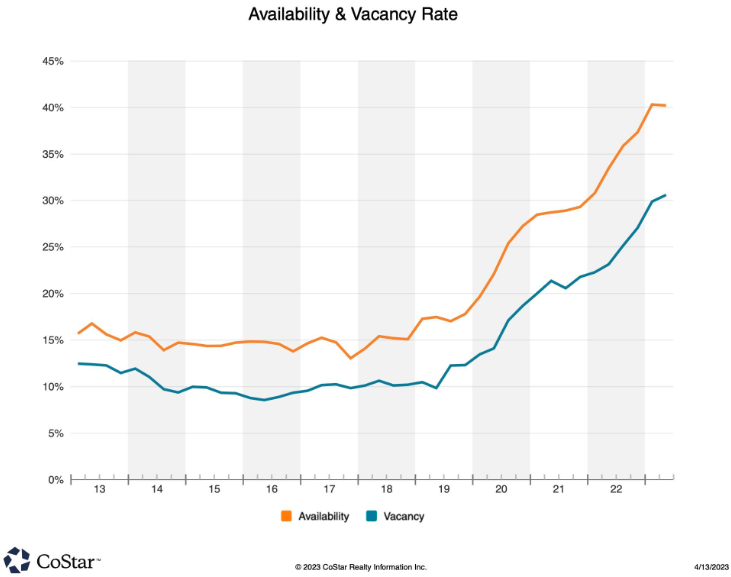
Office space demand is shifting to short-term
/in News /by officespace
We’ve noticed a growing trend toward short-term leases. It seems that more and more tenants are requesting one-year terms when three to five years used to be the norm. While the current economic uncertainty is certainly a factor, we believe there’s a larger societal shift at play.
We’re living in an age where on-demand services like Netflix, Airbnb, Amazon Prime, and Uber are programming us to think short-term. We’re becoming accustomed to the idea that we can have whatever we want, whenever we want it. This mindset is starting to spill over into our business decisions, and it’s not very compatible with the majority of the existing office leasing inventory. Most office space is designed, priced, and marketed for long-term commitments (5 or more years) and stable cash flow for landlords. Some owners are leaning into this emerging trend with move-in-ready suites, shorter terms, and simplified lease forms, but I think the demand for flexibility and a fast, streamlined leasing process is far outstripping supply.
Why use a Tenant representation firm?
/in News /by officespaceUsing a tenant representation firm can offer a number of benefits when looking for office space to lease. Some of the main reasons to consider using a tenant representation firm include:
- Expertise: Tenant representation firms have specialized knowledge and experience in the commercial real estate market. They can help you understand the local market conditions and identify properties that meet your specific needs and budget.
- Access to a Wide Range of Properties: Tenant representation firms have access to a wide range of properties, including those that may not be actively advertised on the open market. This can increase your chances of finding the perfect space for your business.
- Negotiating Power: Tenant representation firms have the skills and experience to negotiate the best terms for your lease. They can help you understand the lease agreement, identify potential issues and work with the landlord to make sure you are getting the best deal possible.
- Time-Saving: Searching for office space can be a time-consuming process. A tenant representation firm can save you time by identifying properties that fit your needs, scheduling tours and handling negotiations on your behalf.
- Cost-effective: Tenant representation firms are typically paid by the landlord and not the tenant, so you can use their services for free.
- They can help you identify potential issues with the property, such as zoning laws, parking, utilities, etc.
It is important to remember that tenant representation firms represent your interests and they will work to find the best possible space that fits your needs and budget, so you can focus on running your business.
Are Remote Work Policies Changing?
/in News /by officespaceThe recent poor financial performance of tech companies is giving corporate leaders a reason to bring employees back to the office… even if just for a couple of days a week.
Everyone who comes into the office will expect their “own desk” so I don’t think office sizes can change that much. The reduction in office size will be from scaled-back headcount and some permanent remote employees that don’t need an office presence.
Read more at this article on Costar
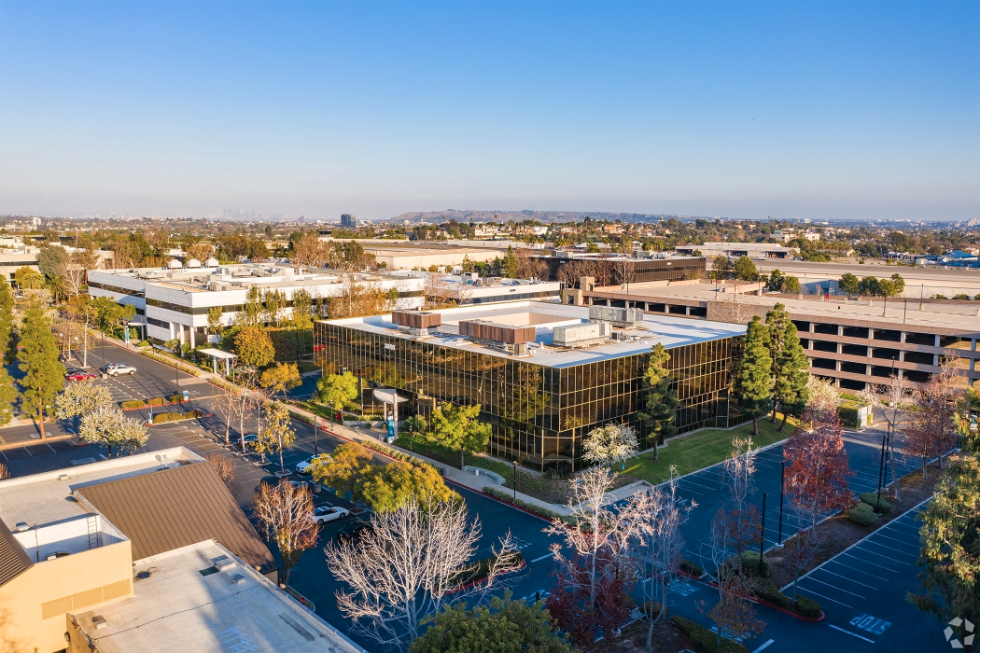
Will Remote Workers Be Forced to Go Back to the Office Soon?
/in News /by officespaceThis survey shared by Costar shows the feelings of employees about where they work. 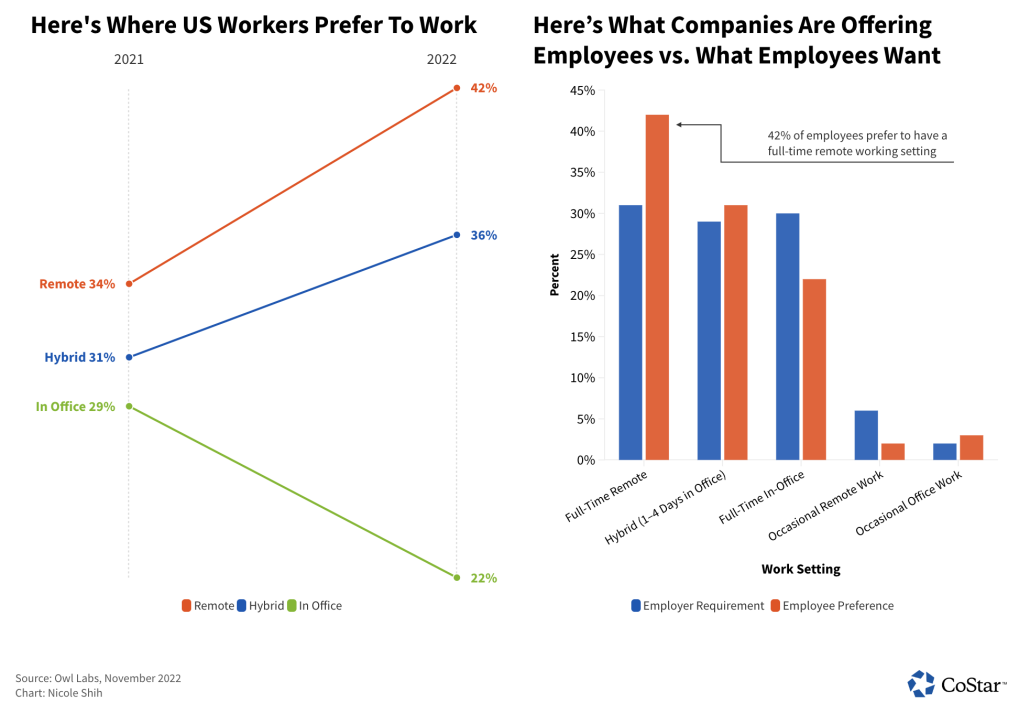
Even though I go to the office almost every day and enjoy being there, I guess I would have said “Hybrid” for myself because I work a portion of most mornings at home. I am sure employees want to keep the freedom that they have become accustomed to. The harsh reality is that employers are going to be making layoff decisions based on relationships and those who demonstrate they want to work.
Here is a paraphrased quote from a client that shows an employer perspective: “Rumors out here are Q1 is going to be super rough, which actually will help in a weird way as people will realize they need to hang on to their jobs. Then CEOs will get back in control of the company. I ended up laying off people earlier this year because they were just not working or had a real sense of entitlement. The tide is turning.”
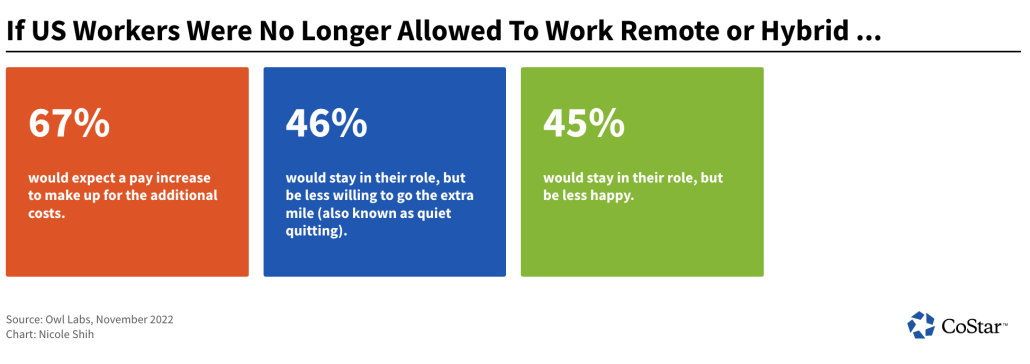
Thoughts?
How to Prepare to Fill Office Vacancies
/in News /by officespace
The best strategy for office landlords with vacancies is to speculatively build out spaces and get them move-in ready, be flexible with the lease term, and offer aggressive incentives to land every prospect that is serious about their space.
What adjustments are you (or your industry) making right now?
